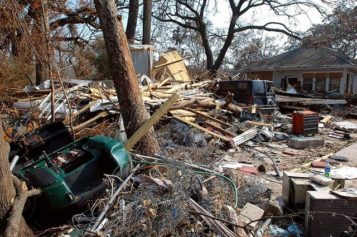Haiti, a desperately poor nation that seems perpetually on the verge of disaster, appears to have been pushed into it once again by Hurricane Sandy, which devastated the island nation still reeling from a catastrophic earthquake and Hurricane Irene earlier in the summer.
A week after Sandy struck the Caribbean, Haiti is in dire straits as UN relief agencies are rushing to bring food, shelter and construction materials to the island. The response came at least three days late as the New York headquarters of the UN and its staff was also hard hit by the storm.
According to the UN, more than 1.2 million Haitians are staring in the face of “food insecurity,” meaning they are in danger of starving to death. At least 15,000 homes in Haiti were destroyed in a country where 350,000 were still homeless and living in tents nearly three years after the January 2010 onslaught of the earthquake. Though the UN now puts the Haiti death toll at 54, with 20 missing, it could actually be much worse because the rains from the hurricane have rendered many of the roads leading to the mountainous interior impassable—so relief workers haven’t been able to get to many of the people living there.
Haiti’s crisis is worsened by a yearlong drought and damage from Hurricane Isaac in August that had already taken their toll on food production, according to Johan Peleman, head of the U.N. Office for the Coordination of Humanitarian Affairs in Haiti.
“With this new tropical storm, we fear that a great deal of the harvest which was ongoing in the south of the country may have been destroyed completely,” Peleman told Radio UN in an interview.
A UN report said at least 11 people were reportedly killed in Cuba, where the storm damaged or destroyed 188,000 homes and inflicted severe damage on about 245,000 acres of the vital sugar crop in the eastern part of the island. Storm-related deaths were also reported in Jamaica, the Bahamas and the Dominican Republic, with the U.N. reporting at least 71 killed across the Caribbean in Sandy’s wake.
Peleman told the Guardian, “This country is very vulnerable. It has the world’s worst cholera epidemic and 3.5 percent of people in the capital are still living in tents.”
Prime minister Laurent Lamothe described it as a “disaster of major proportions.” According to the Guardian, there is little resentment that the U.S. has gotten far more attention after the storm; Haitians are used to it.
“This is not the first nor the last disaster we will have. We have seen so much worse that we are relieved there is only this,” noted Emmelie Prophete–Milcé, a writer based in Port-au-Prince, told the Guardian. “In New York disasters do not happen every day so the media have a good catch. In Haiti the disasters come every day. Well, almost.”
Even before Sandy, Haiti had more cholera cases than the rest of the world put together. Almost 6 percebt of the population have been affected and 7,500 people have died.


